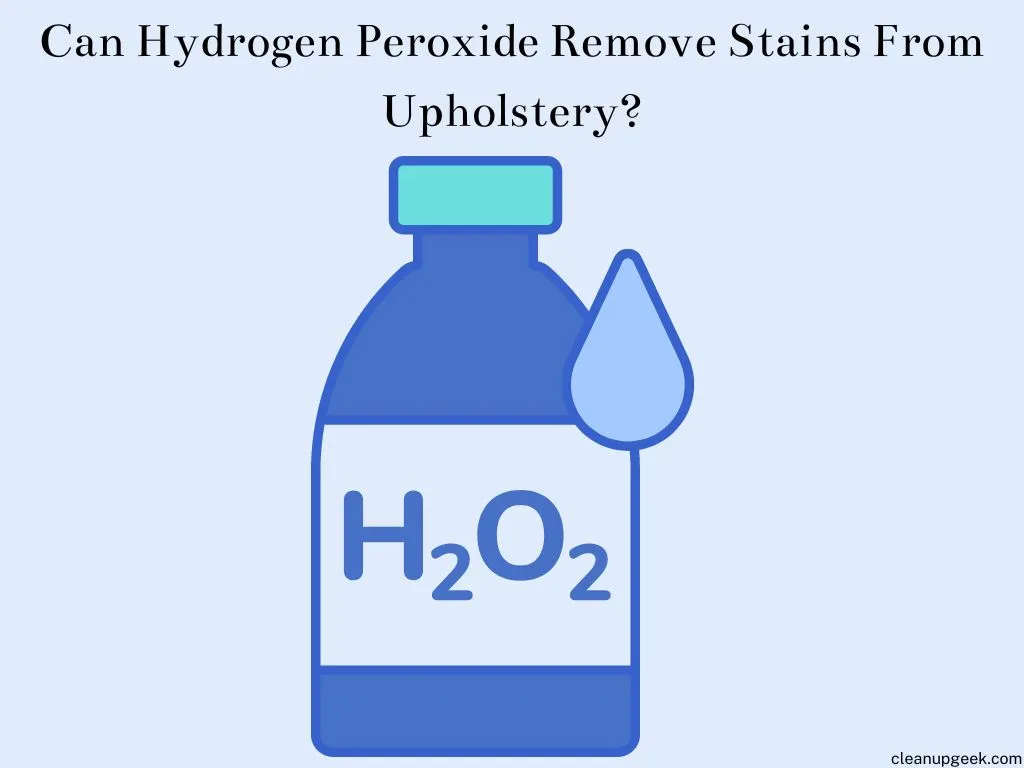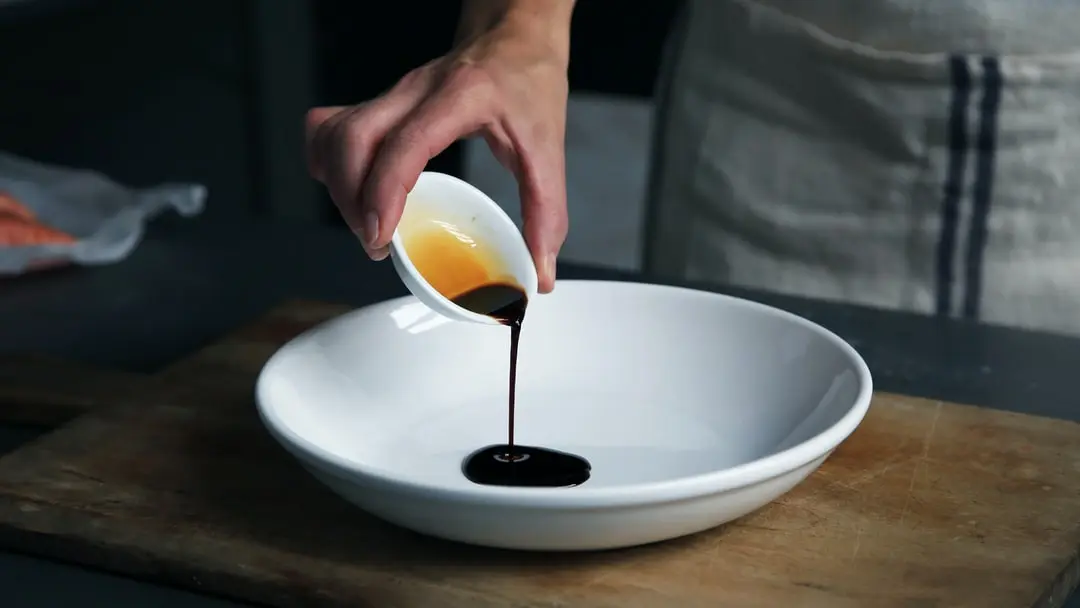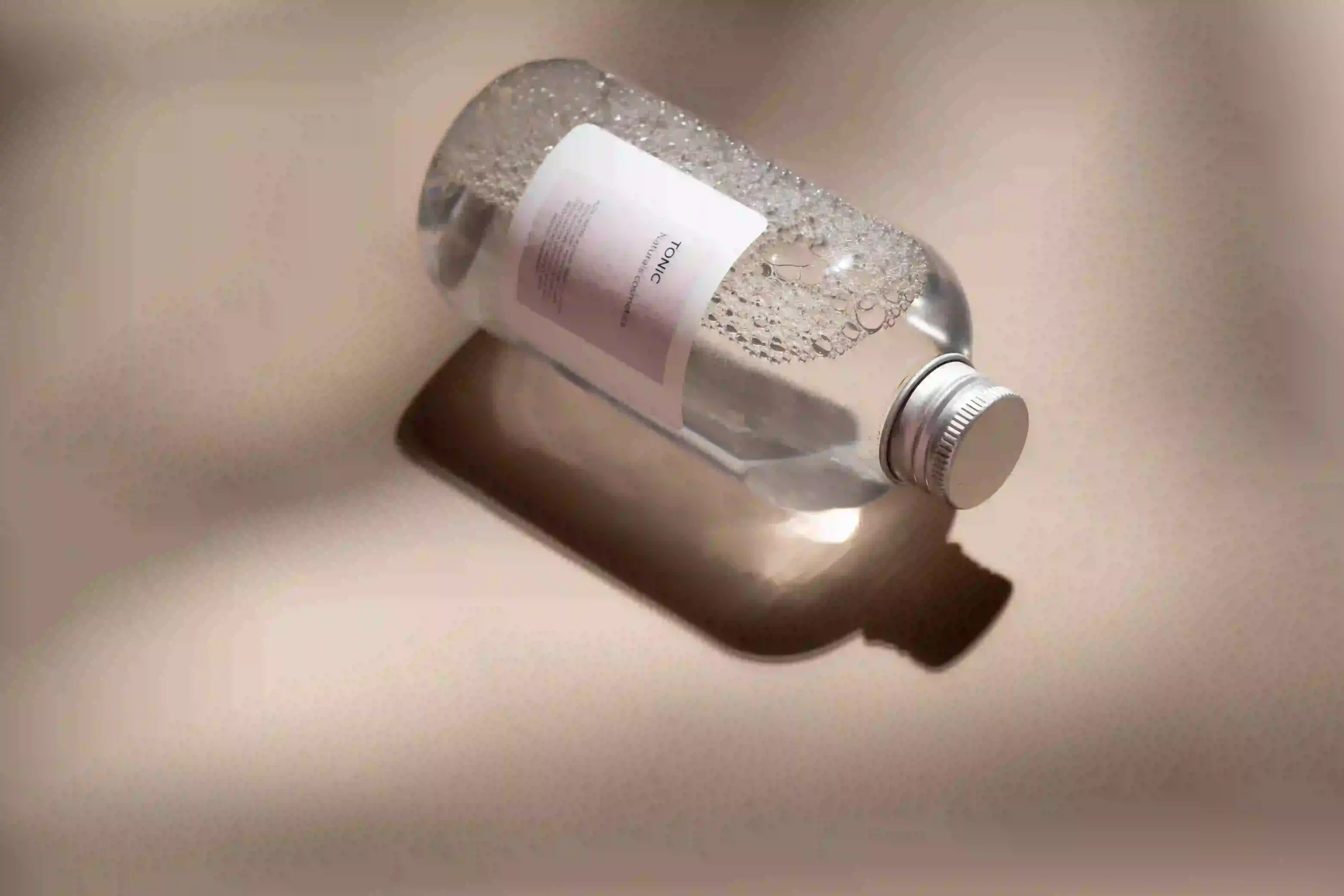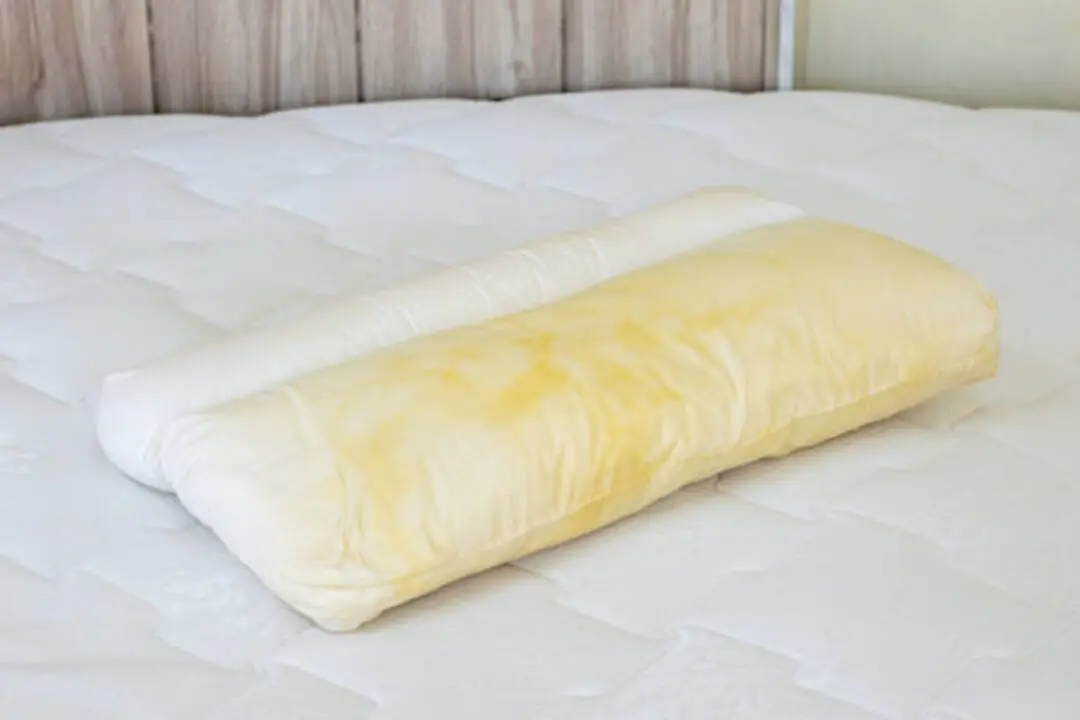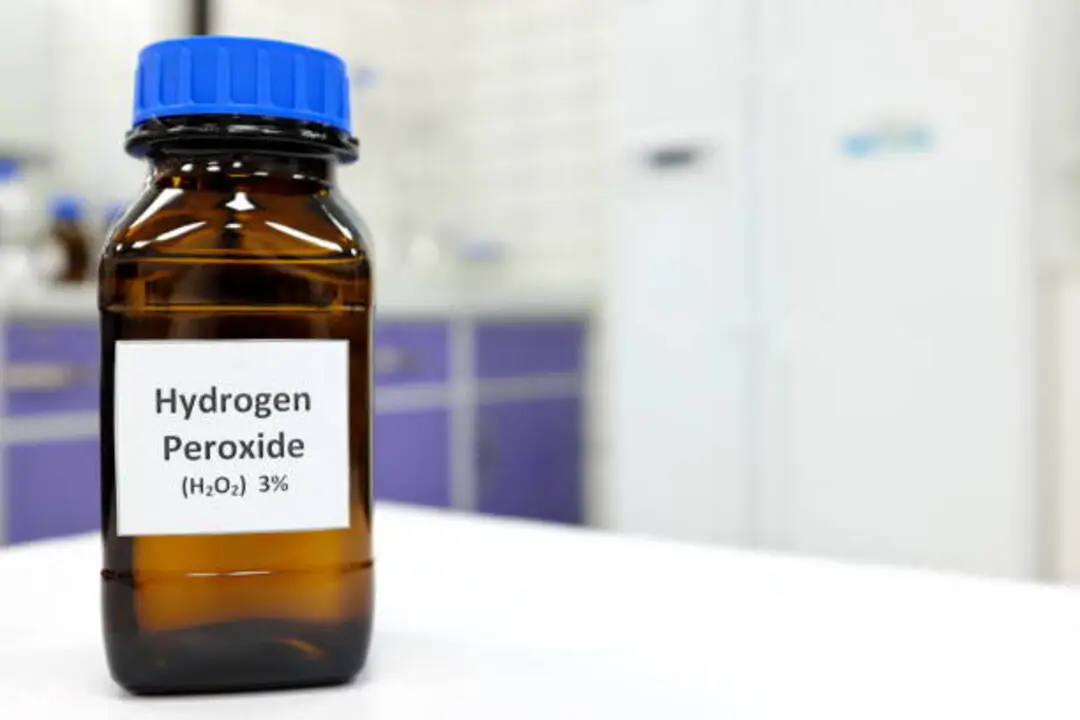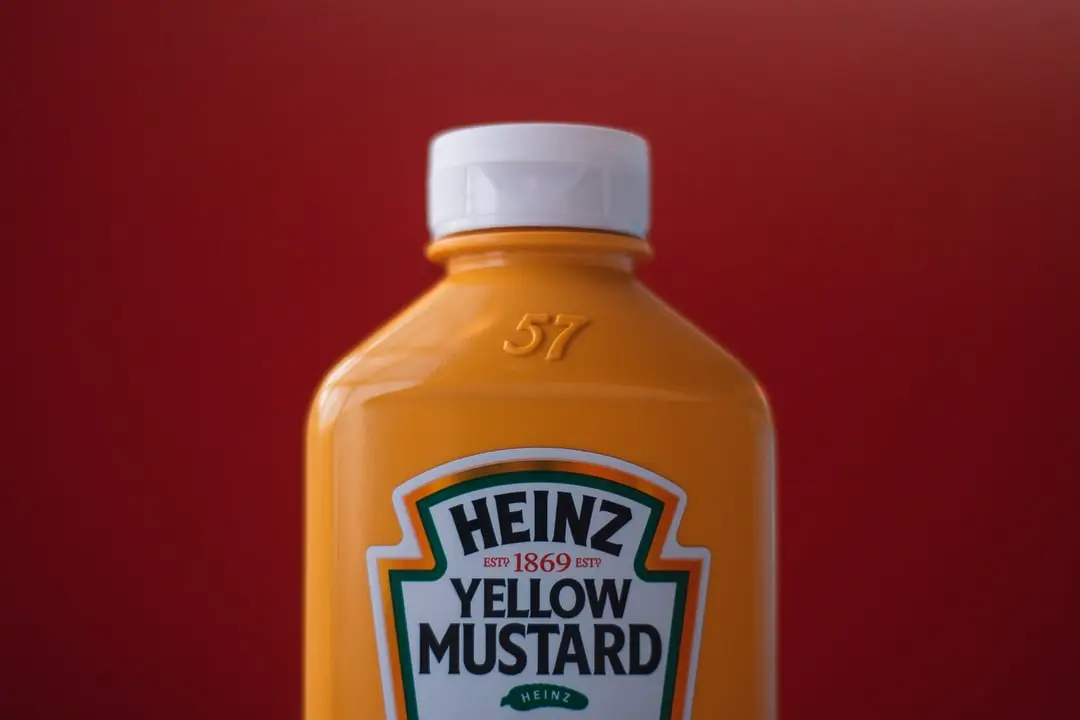Is hydrogen peroxide good for cleaning stains off of upholstery? Hydrogen peroxide (H2O2) is a clear liquid with strong oxidizing properties. It is slightly more viscous than water and has a bitter, astringent taste.
Hydrogen peroxide is formed when oxygen reacts with water and decomposes into oxygen and water. It is a weak acid and is used as a cleaning agent and disinfectant. So, is hydrogen peroxide good at removing stains from upholstery?
Yes, hydrogen peroxide can remove stains from upholstery. Hydrogen peroxide is good at removing organic stains (mustard, ketchup, coffee, tea, food stains, etc.). However, using hydrogen peroxide to remove stains from upholstery can be a slow process because the most available type of hydrogen peroxide (i.e., 3% concentrated) is less effective at removing stains.
Therefore, in order to effectively remove stains from upholstery using 3% concentrated hydrogen peroxide, you must pre-treat the stains with dish soap before applying hydrogen peroxide. In this article, we will provide a guide on how to efficiently and effectively remove stains from your upholstery using peroxide.
How Does Hydrogen Peroxide Remove Stains?

Hydrogen peroxide is a chemical compound with the formula H2O2. In its pure form, it is a pale blue liquid, slightly more viscous than water. Hydrogen peroxide is the simplest peroxide (a compound with an oxygen–oxygen single bond). Hydrogen peroxide is a powerful bleaching agent that can remove even the toughest stains.
Hydrogen peroxide is a molecule consisting of two oxygen atoms and two hydrogen atoms. The oxygen atoms are bonded together by covalent bonds, and each oxygen is bonded to a hydrogen by a weaker polar covalent bond. But how does it remove stains from fabrics?
When hydrogen peroxide comes into contact with a stain, it breaks down the molecules that make up the stain. This makes it easy to remove the stain with a cloth or sponge. It is also an effective way to remove stains from clothing.
Hydrogen peroxide is safe to use on most fabrics, but you should always test it on an inconspicuous area first to be sure. To remove a stain with hydrogen peroxide, simply dilute it, apply it to the stain, and scrub with a soft brush, sponge, or cloth.
Can Hydrogen Peroxide Remove Stains from Upholstery?

If you’re looking for a safe and effective way to remove stains from your upholstery, hydrogen peroxide may be the answer. Hydrogen peroxide is a common household ingredient that can be used for many purposes, including removing stains from upholstery. In addition, hydrogen peroxide is gentle on fabric and won’t damage the material like some harsher chemicals can.
However, the drugstore version of hydrogen peroxide is 3% concentrated, which makes it milder and less effective at removing stains as compared to higher concentrations. Usually, 7% concentrated hydrogen peroxide is the most effective at removing any type of stain from fabrics. However, this concentration can damage some fabrics and can cause colors to bleed. So, it is important to take care when using this concentration to avoid damaging your upholstery.
Therefore, we do not recommend that you use 7% concentrated hydrogen peroxide on your upholstery. There’s still a way to effectively remove stains from your upholstery with 3% concentrated hydrogen peroxide. All you need to do is to pre-treat the stains with dish soap before cleaning them with peroxide.
When used correctly, hydrogen peroxide can safely and effectively remove a variety of stains from upholstered furniture, including food and beverage stains, blood stains, and more. However, it is important to test the peroxide on an inconspicuous area of the fabric first to ensure that it does not cause any damage.
Mistakes to Avoid When Cleaning Upholstery with Hydrogen Peroxide
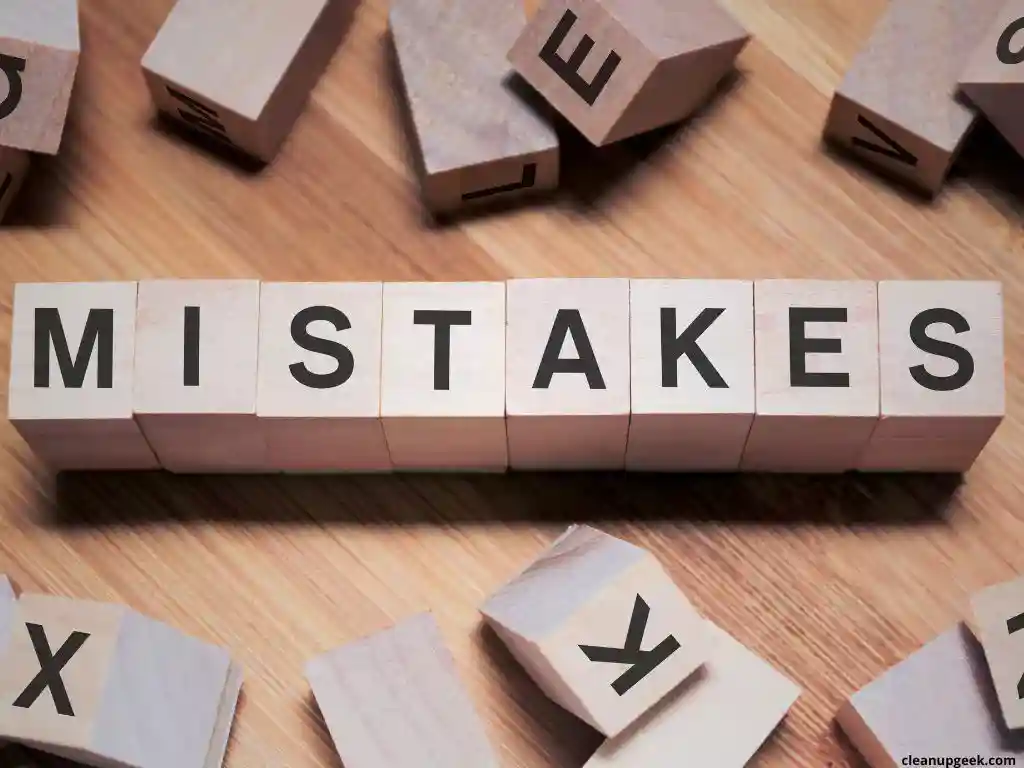
Hydrogen peroxide is a powerful cleaning agent that can be used on many different surfaces, including upholstery. When used correctly, it can safely remove stains and dirt. However, there are a few mistakes to avoid when using hydrogen peroxide on upholstery. Here are seven mistakes to avoid:
1. Always test the peroxide on an inconspicuous area of the fabric to make sure it does not cause any damage.
This is especially important if you are using a concentrated peroxide solution. Apply a small amount of peroxide to the area and wait a few minutes to see if there is any reaction. If there is no reaction, you can proceed with using the peroxide on the stain.
2. Never mix peroxide with other cleaning agents.
Peroxide is a powerful cleaning agent, but it should never be mixed with other cleaning agents. Mixing peroxide with other cleaners can create dangerous fumes that can be harmful to your health. If you need to use peroxide to clean something, always make sure to use it by itself and not in combination with any other cleaners.
3. Never use peroxide on leather or suede upholstery.
Peroxide is a powerful oxidizing agent that can cause irreversible damage to leather and suede upholstery. It should never be used on these materials.
4. Always dilute the peroxide with water.
It is important to always dilute peroxide with water before using it, as undiluted peroxide can be harmful to the skin. When diluted, peroxide can be a helpful tool for cleaning or disinfecting.
5. Always wear gloves when using peroxide on the upholstery.
Peroxide is a powerful chemical that can cause serious damage to the upholstery on your furniture. Always wear gloves when using peroxide, and be sure to follow the manufacturer’s instructions carefully.
6. Do not use too much peroxide.
Peroxide is a powerful oxidizing agent and can cause serious damage to your skin and upholstery if used at a higher concentration. Be sure to follow the instructions on the bottle and only use as much as directed.
7. Don’t use hydrogen peroxide on upholstery that is delicate.
Hydrogen peroxide is a great way to clean upholstery, but it’s important to be careful with delicate fabrics. Hydrogen peroxide can bleach fabrics and damage some types of upholstery, so it’s best to avoid using it on delicate fabrics. If you’re not sure whether or not your upholstery is delicate, it’s always best to err on the side of caution and avoid using hydrogen peroxide.
How to Remove Stains from Upholstery Using Hydrogen Peroxide

One of the most common household cleaning products is hydrogen peroxide. It can be used for a variety of cleaning tasks, including sofas. Here are some tips on how to remove stains from upholstery using hydrogen peroxide:
Items needed:
1) Dish soap
2) 3% concentrated hydrogen peroxide
3) Warm water
4) Spray bottle or bowl
5) A soft brush, sponge, or microfiber cloth
6) Tablespoon
7) Measuring cup
Procedure:
1. Mix two tablespoons of dish soap with one cup of warm water in a spray bottle.
2. Shake gently to mix them evenly.
3. Vacuum the upholstery to remove particles before cleaning.
4. Spray the stained areas of the upholstery and allow it to soak for 5 minutes.
5. Gently scrub the stained areas with a soft brush or sponge until the stain is gone.
6. Mix one cup of hydrogen peroxide with two cups of warm water in a bowl.
7. Dip a microfiber cloth in the hydrogen peroxide solution.
8. Gently scrub the stained areas with a cloth to remove stains and excess soap.
9. Dip a clean towel in water and rinse the scrubbed areas to remove residue.
10. Blot the fabric to dry. Make sure the upholstery is completely dry before using it again.
Alternative Upholstery Cleaners to Hydrogen Peroxide

If you’re looking for an alternative to hydrogen peroxide for cleaning your upholstery, there are a few options. White vinegar is a natural disinfectant and can be used to clean upholstery. Just mix one part vinegar with one part water and spray it on the fabric. Let it sit for a few minutes before wiping it off with a damp cloth.
In addition, baking soda is another great alternative for cleaning upholstery. Just make a paste with baking soda and water and rub it into the fabric. Rinse the area with water and let it dry.
Furthermore, dish soap is another great alternative to hydrogen peroxide and traditional upholstery cleaners. It is gentle and effective, and it doesn’t require any harsh chemicals. Simply mix dish soap with water and use it to clean your furniture.
Finally, another option is lemon juice. Lemon juice is also a natural disinfectant and has bleaching properties that can help remove stains. Simply mix fresh lemon juice with water in a spray bottle and spritz on the affected area. Let it sit for several minutes, then blot it with a clean, dry cloth.
Click here to get access to our blog articles, which will help you to keep yourself and your surroundings clean!
Final Thoughts
Hydrogen peroxide is a great option for cleaning upholstery stains, as it is effective at breaking down stains and is safe to use on most fabrics. To remove a fresh stain, pour diluted peroxide directly onto the stained area and blot with a clean cloth.
You can also pre-treat tough stains by mixing peroxide with water in a 1:1 ratio and applying it to the fabric with a spray bottle. Let the mixture sit for 10 minutes before blotting dry.
However, it’s always best to test the peroxide on a small, hidden area of the upholstery first to be sure it won’t damage or discolor the fabric.
